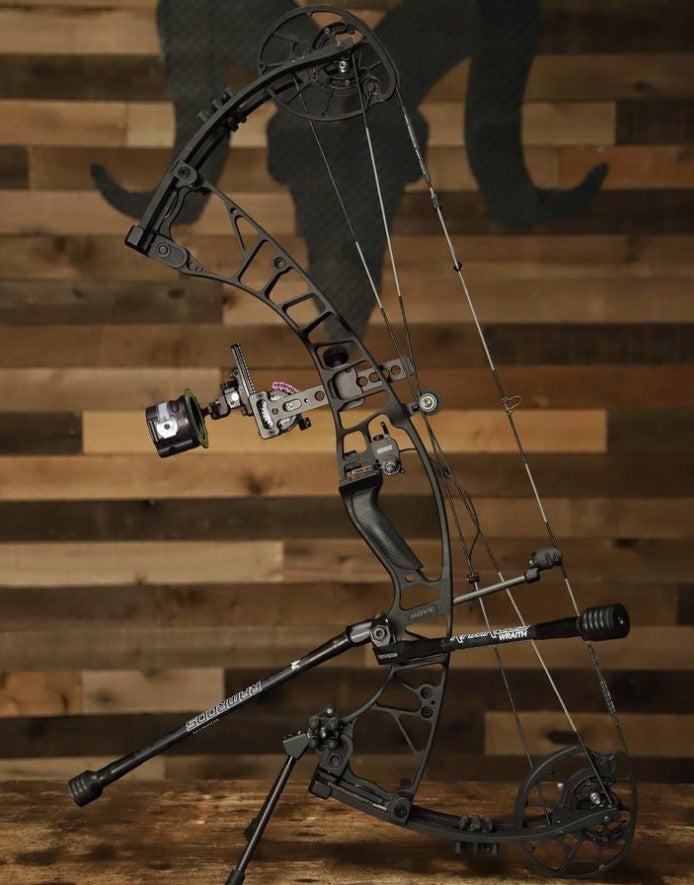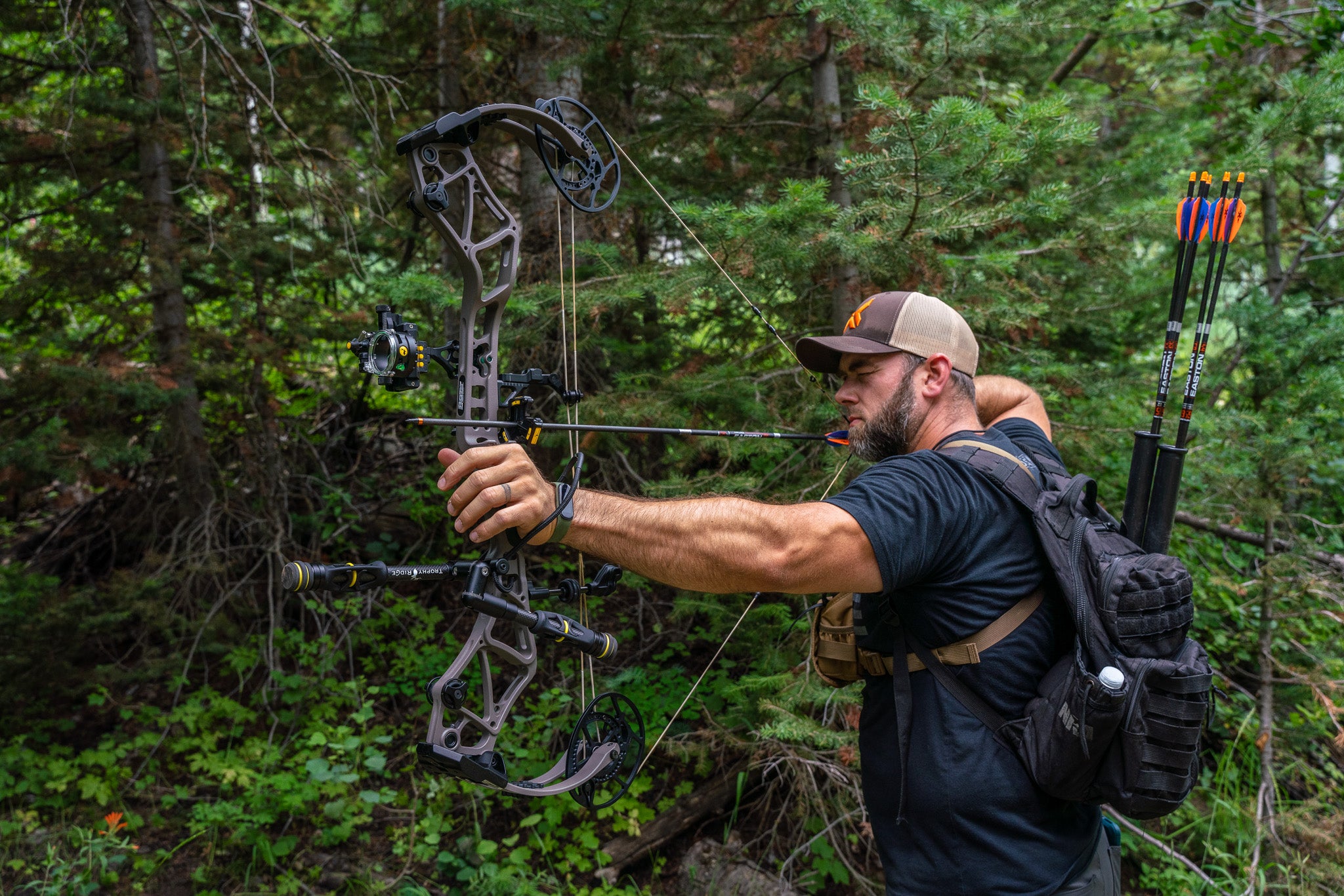Opening Accuracy: The Advantages of Using Archery Stabilizers
Wiki Article
The Ultimate Overview to Selecting the Right Archery Stabilizer for Enhanced Precision
Archery is a sporting activity that demands precision and accuracy, and choosing the best tools is important for achieving optimal results. Amongst the numerous accessories readily available, an archery stabilizer plays a substantial role in improving accuracy. Nonetheless, with so several options on the market, it can be overwhelming to establish which stabilizer is the right suitable for your needs. In this comprehensive overview, we will explore the key variables to take into consideration when choosing an archery stabilizer for improved precision. From locating the ideal size to understanding the different designs and materials, we will explore every little thing you require to understand to make an educated decision. Whether you are a seasoned archer looking to upgrade your devices or a novice looking for guidance, join us on this journey as we untangle the keys to picking the best archery stabilizer.Length: Discovering the Optimum Stabilizer Length
Determining the excellent stabilizer length is crucial when choosing an archery stabilizer for ideal performance. A stabilizer that is too long can make the bow really feel difficult and top-heavy to regulate, while a stabilizer that is as well brief may not provide sufficient stability and dampening of vibrations.A longer stabilizer, generally varying from 8 to 12 inches, can supply better security and decrease bow torque. This is specifically advantageous for archers who shoot with a high draw weight or those that have a propensity to torque the bow throughout the shot. The added length assists to disperse the weight equally and counterbalance any kind of torque or activity.
On the other hand, a shorter stabilizer, typically between 4 to 7 inches, supplies much more maneuverability and quicker response. It is favored by archers who shoot with a lower draw weight or those that call for even more flexibility, such as hunters or 3D shooters. The much shorter size permits easier activity with limited areas and faster changes.
Ultimately, the ideal stabilizer size refers personal preference and shooting style. It is recommended to trying out various lengths and observe the results on security and accuracy. Consulting with skilled archers or experts can additionally provide beneficial understandings and suggestions.
Weight: Determining the Appropriate Stabilizer Weight
After considering the optimal stabilizer size, the following essential variable to take into consideration when choosing an archery stabilizer is identifying the proper stabilizer weight - archery stabilizer. The weight of the stabilizer plays an important function in boosting accuracy and security during the shotThe weight of the stabilizer influences the equilibrium and control of the bow. A larger stabilizer can give raised security and control, especially for shooters with a propensity for shaky hands or inconsistent shots. It helps to take in the vibrations and recoil created by the bow, minimizing torque and decreasing the effect on the arrow's trip.
On the other hand, a lighter stabilizer enables for a quicker and extra receptive bow. It can be beneficial for shooters that focus on maneuverability and rate over security. Lighter stabilizers also minimize tiredness during lengthy shooting sessions or competitors.
To figure out the suitable stabilizer weight for your demands, it is essential to consider your capturing style, physical stamina, and bow setup. Trying out with various weights and observing the effect on your shooting efficiency is essential to finding the excellent balance.
Inevitably, the optimal stabilizer weight will differ for each and every individual archer. It is recommended to begin with a moderate weight and make modifications based on personal preference and capturing results. Bear in mind, the objective is to accomplish a regulated and steady shot, while additionally preserving comfort and ease of use.
Products: Picking the Right Products for Resilience and Performance
When choosing an archery stabilizer, it is critical to carefully consider the materials made use of in more its construction to guarantee longevity and maximize efficiency. The choice of materials can considerably influence the general quality and performance of the stabilizer.One of the most commonly used materials for stabilizers is carbon fiber. Furthermore, carbon fiber stabilizers are immune to temperature modifications and are less most likely to warp or bend over time.
One more popular material for stabilizers is aluminum. Light weight aluminum stabilizers likewise offer a vast variety of personalization choices, allowing archers to readjust the weight and size to suit their preferences.
Some stabilizers are created using a combination of products. As an example, a stabilizer may have a carbon fiber core wrapped in an aluminum covering. This hybrid layout combines the very best top qualities of both materials, providing ideal stability, resilience, and efficiency.
Design: Recognizing the Various Stabilizer Styles and Their Impacts
Taking into consideration the products utilized in archery stabilizers, it is very important to now look into the various layouts of stabilizers and their corresponding effects. The layout of an archery stabilizer plays a vital role in enhancing precision and decreasing resonance during the shot. There are several different layouts readily available in the market, each with its own one-of-a-kind qualities.
Another popular layout is the side bar stabilizer. This layout includes connecting a brief pole sideways of the bow, alongside the primary lengthy rod. Side bar stabilizers assist in counteracting the weight of devices, such as sights or quivers, and give added stability to the bow.
Some stabilizers come with flexible weights. These stabilizers enable archers to fine-tune the equilibrium and feel of their bows by including or getting rid of weights. This attribute is specifically beneficial for archers who choose a certain weight circulation or intend to experiment with various setups.
Furthermore, some stabilizers integrate wetting innovation to reduce resonance and sound. These stabilizers usually have built-in dampeners or utilize products check my reference that take in resonances, leading to a smoother and quieter shot.

Accessories: Checking Out Additional Accessories for Improved Stability
These accessories are created to work in combination with the archery stabilizer to provide an even higher degree of security and accuracy. One such accessory is the V-bar or the side stabilizer mount.One more accessory that can improve security is a bow sling. A bow sling is a strap that connects to the bow and enables the archer to maintain a kicked back hold on the bow manage without the anxiety of dropping it (archery stabilizer). This loosened up grasp helps to minimize muscle stress and enables a much more secure see it here and regular shot
In addition, a stabilizer weight system can be made use of to tweak the equilibrium and stability of the bow. These weight systems commonly consist of little weights that can be included or gotten rid of from the stabilizer to readjust the equilibrium factor of the bow. By finding the optimal equilibrium factor, archers can attain a much more steady and precise shot.
Conclusion
In verdict, choosing the appropriate archery stabilizer involves considering aspects such as length, weight, products, style, and added devices. The optimum stabilizer size and weight will certainly depend on specific preferences and shooting style.Determining the ideal stabilizer length is essential when picking an archery stabilizer for optimal performance. A stabilizer that is also long can make the bow really feel top-heavy and tough to regulate, while a stabilizer that is as well brief might not provide enough stability and dampening of resonances - archery stabilizer.Taking right into account the materials made use of in archery stabilizers, it is important to currently delve into the various layouts of stabilizers and their corresponding effects. Side bar stabilizers help in counteracting the weight of devices, such as views or quivers, and provide additional security to the bow
These weight systems normally are composed of small weights that can be added or removed from the stabilizer to adjust the equilibrium factor of the bow.
Report this wiki page